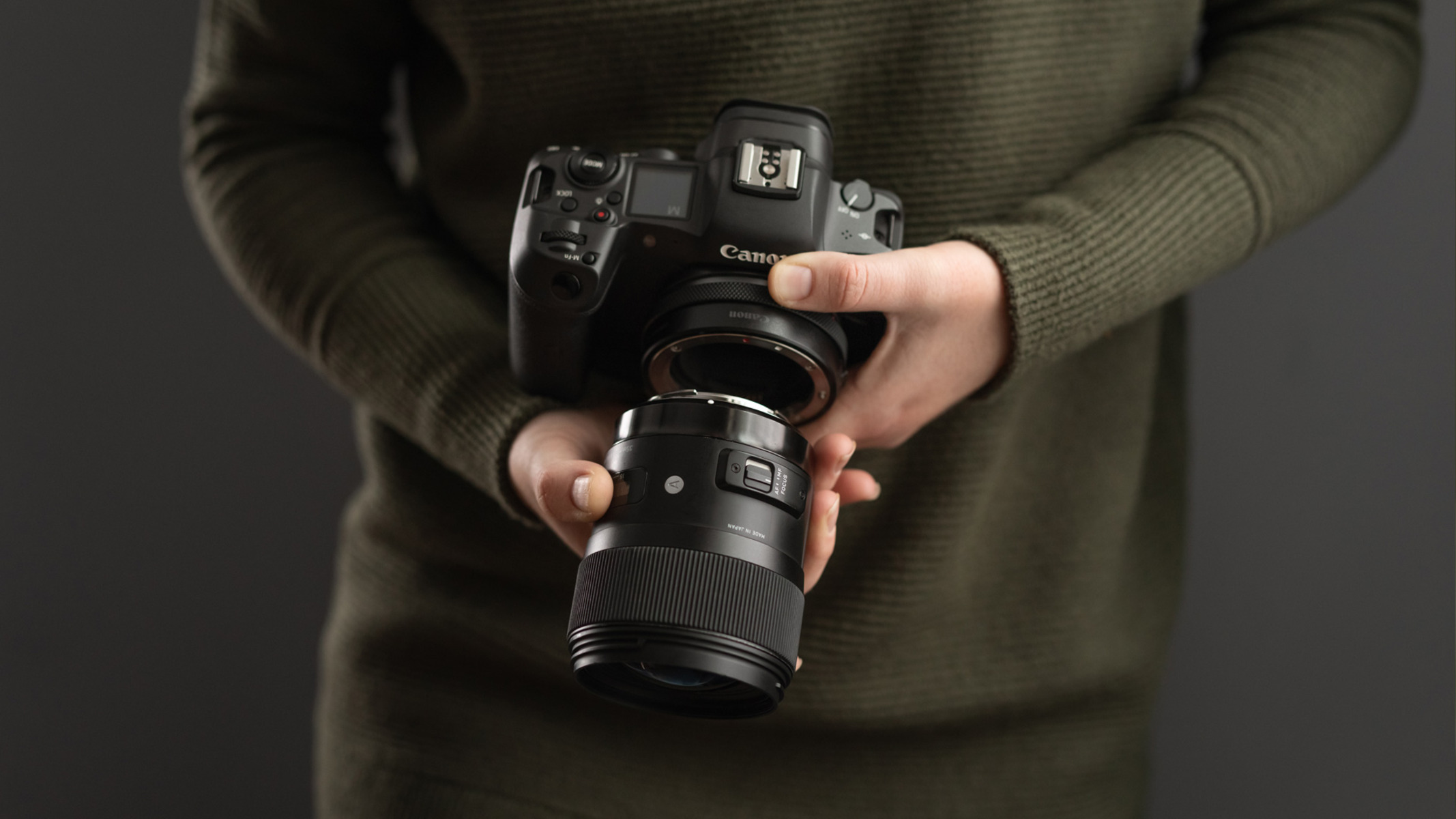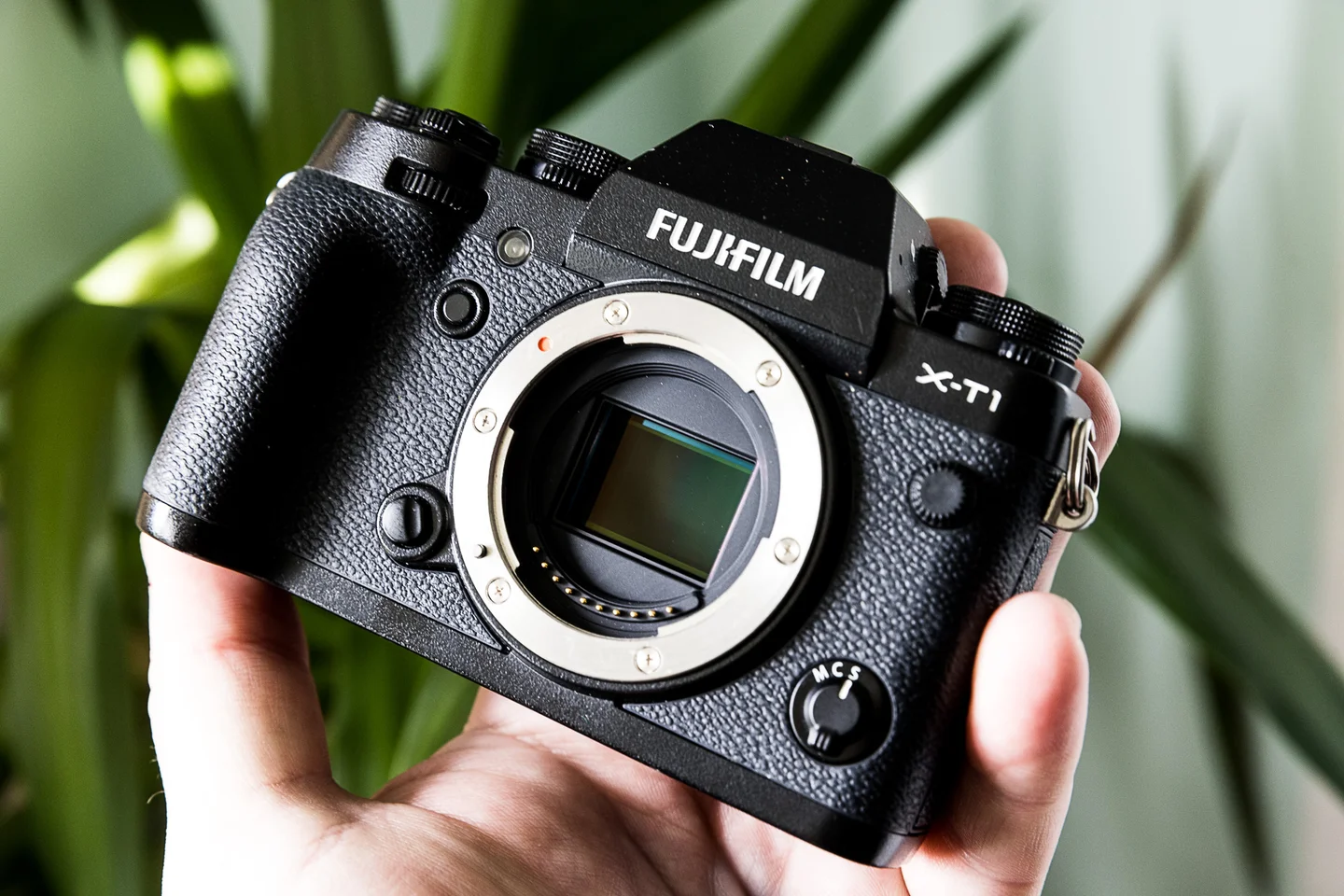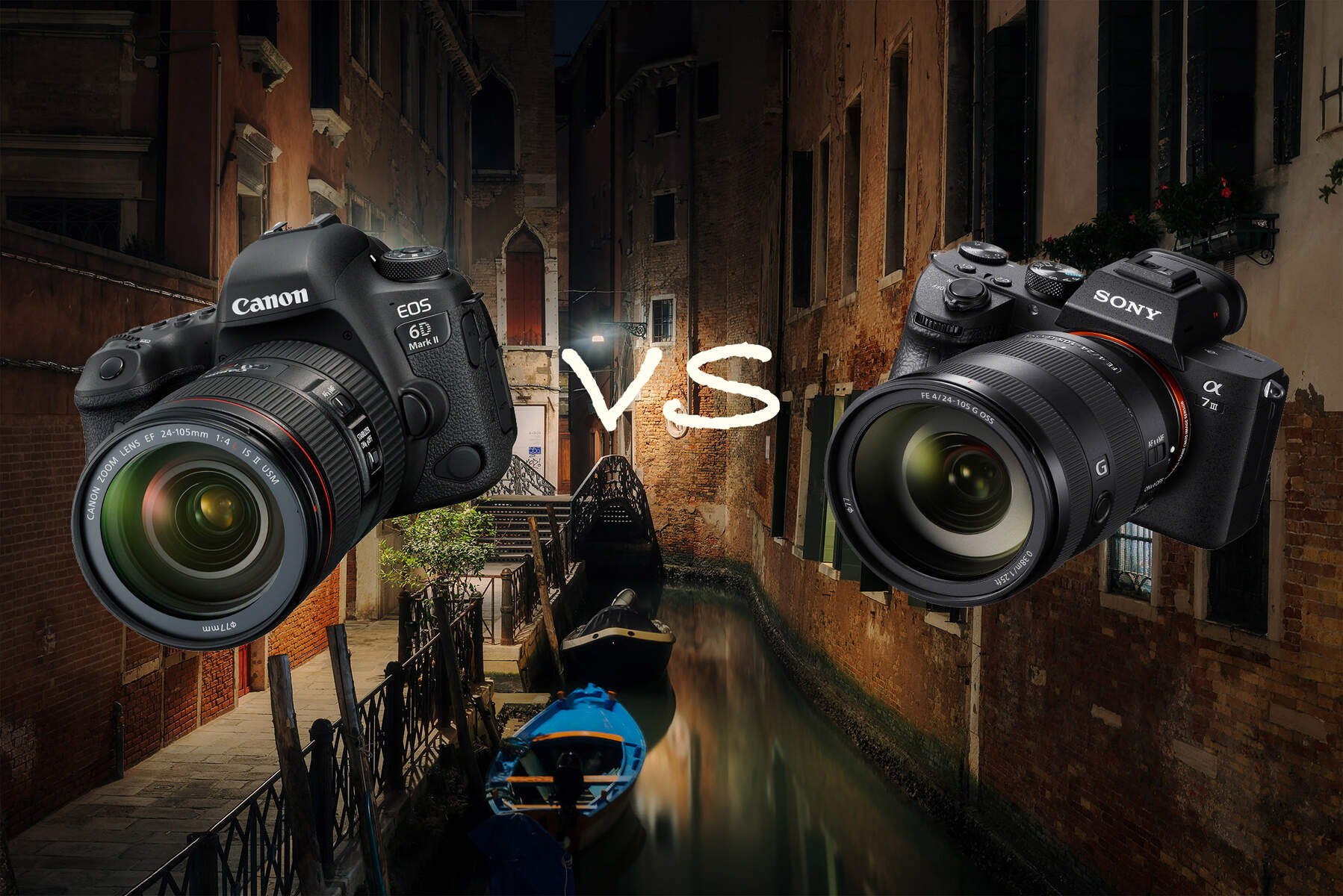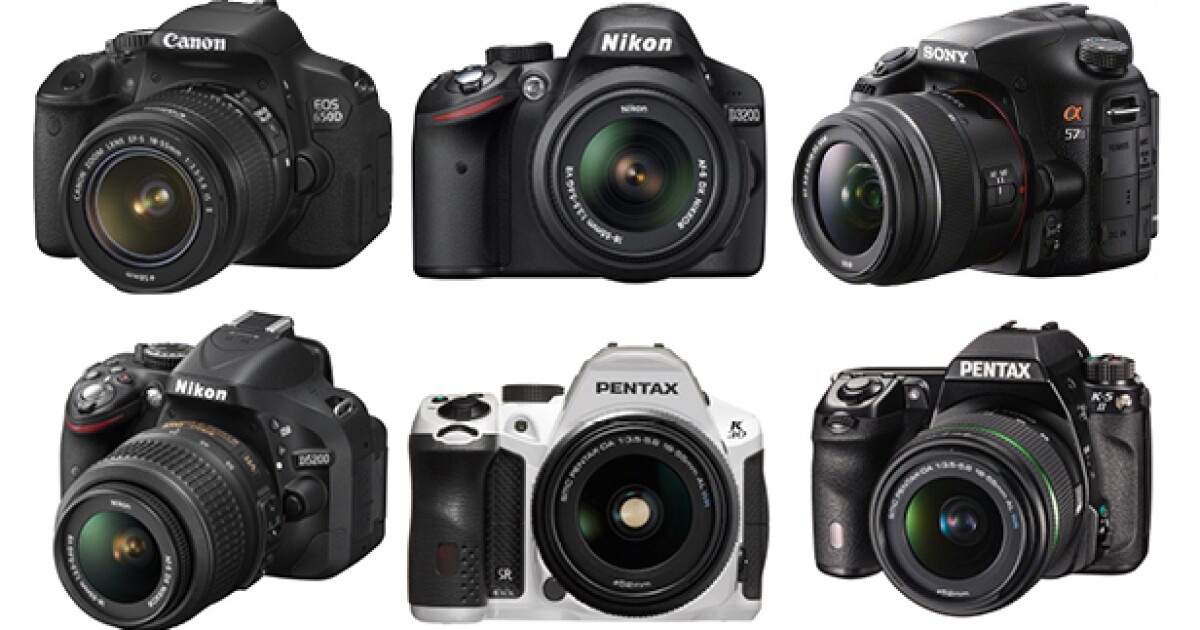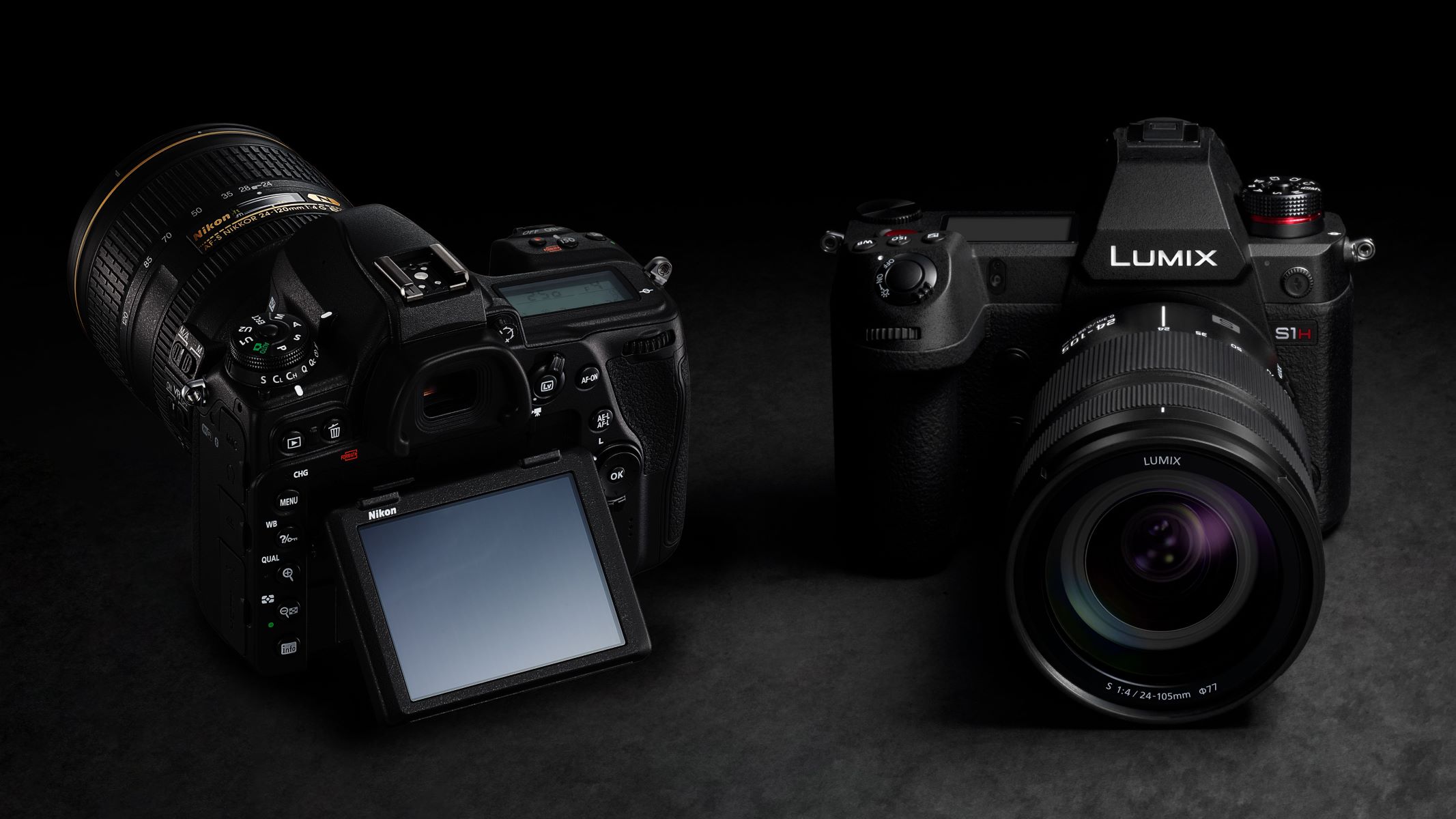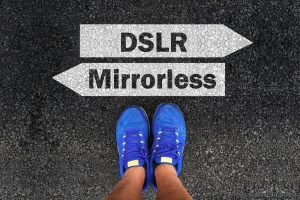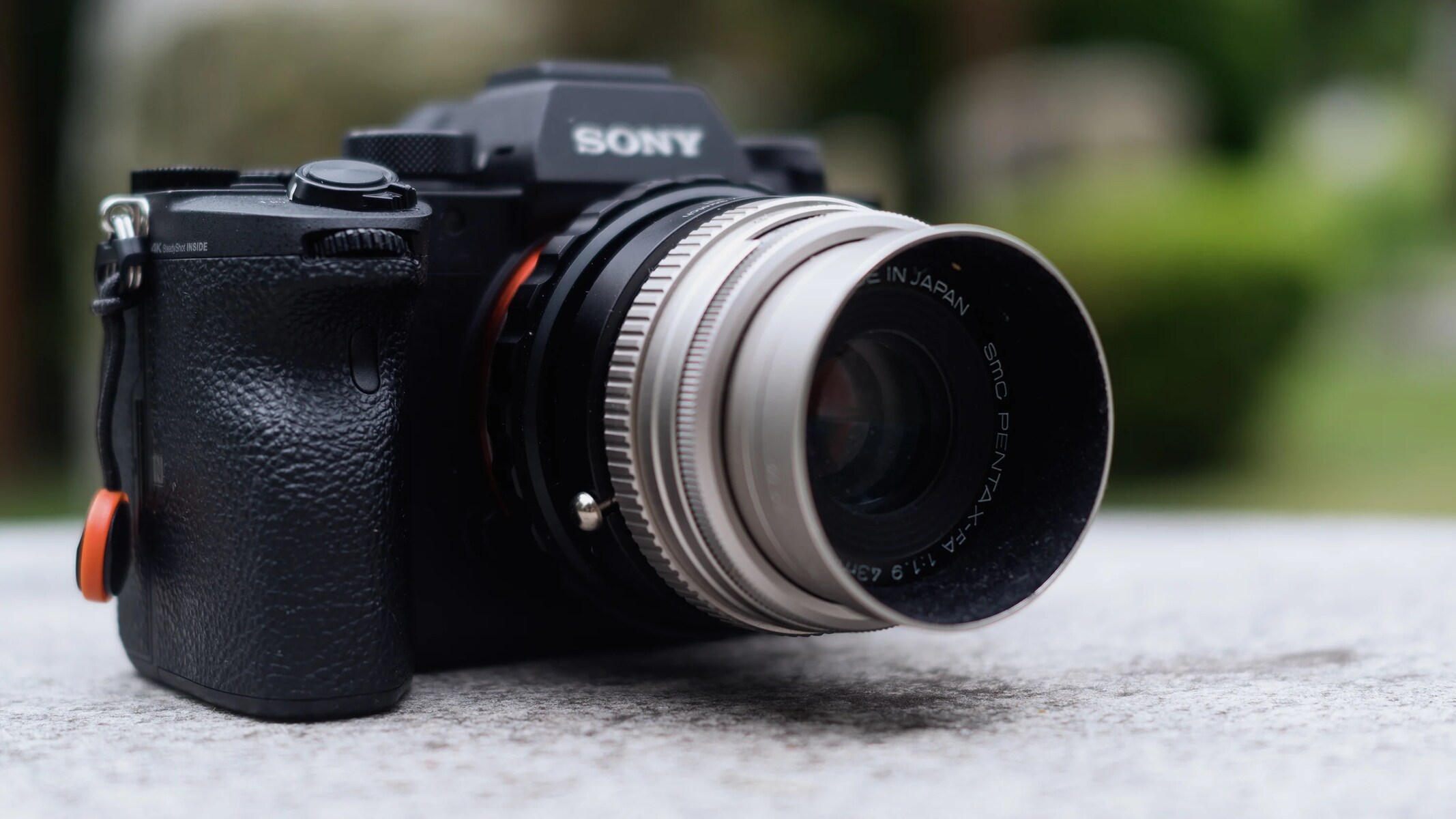Introduction
Welcome to the fascinating world of photography, where technological advancements continually shape the way we capture and immortalize moments. In this digital age, the evolution of cameras has been nothing short of remarkable, with traditional DSLR cameras facing competition from their mirrorless counterparts. Understanding the nuances of mirrorless DSLR cameras is crucial for photographers and enthusiasts alike, as these innovative devices offer a wealth of benefits and unique features.
The introduction of mirrorless DSLR cameras has revolutionized the photography industry, providing a viable alternative to traditional DSLRs. As we delve into the intricacies of mirrorless DSLR cameras, we will explore their inner workings, key features, advantages, and disadvantages. By the end of this exploration, you will gain a comprehensive understanding of what sets mirrorless DSLR cameras apart and how they have redefined the art of photography.
Let's embark on a captivating journey through the realm of mirrorless DSLR cameras, uncovering the technology that powers these devices and the unparalleled advantages they offer to photographers. Whether you are an aspiring enthusiast or a seasoned professional, this exploration will equip you with the knowledge needed to navigate the dynamic landscape of modern photography. Join me as we unravel the mysteries of mirrorless DSLR cameras and discover the boundless possibilities they present for capturing the world around us.
What is a Mirrorless DSLR Camera?
A mirrorless DSLR camera, also known as a mirrorless interchangeable lens camera (MILC), represents a groundbreaking advancement in photographic technology. Unlike traditional DSLRs, which utilize a complex system of mirrors to reflect light into an optical viewfinder, mirrorless DSLR cameras feature a digital display that directly projects the image captured by the camera’s sensor. This eliminates the need for a bulky mirror and pentaprism, resulting in a more compact and lightweight design.
At the heart of a mirrorless DSLR camera is its electronic viewfinder (EVF) or rear LCD screen, which serves as the primary means of composing and previewing images. The absence of a mechanical mirror mechanism allows for a more streamlined and efficient design, making mirrorless DSLR cameras highly portable and well-suited for on-the-go photography.
One of the defining characteristics of mirrorless DSLR cameras is their interchangeable lens system, which empowers photographers to adapt to diverse shooting scenarios by using an array of compatible lenses. This versatility enables photographers to achieve a wide range of creative effects and focal lengths, catering to various genres such as landscape, portrait, macro, and wildlife photography.
Furthermore, mirrorless DSLR cameras are renowned for their advanced autofocus capabilities, leveraging cutting-edge technology to deliver swift and precise focusing performance. With features such as phase-detection and contrast-detection autofocus, these cameras excel in capturing fast-moving subjects and maintaining sharp focus in various lighting conditions.
As we unravel the essence of mirrorless DSLR cameras, it becomes evident that these innovative devices embody the convergence of compactness, versatility, and technological prowess. Their ability to deliver exceptional image quality, coupled with a compact form factor and an extensive selection of lenses, makes them a compelling choice for photographers seeking a seamless blend of performance and portability.
How Does a Mirrorless DSLR Camera Work?
Understanding the inner workings of a mirrorless DSLR camera unveils the ingenious technology that drives its performance and sets it apart from traditional DSLRs. At the core of a mirrorless DSLR camera is its electronic viewfinder (EVF) or rear LCD screen, which serves as the primary means of composing and previewing images. When the photographer frames a shot, the image is captured by the camera’s image sensor and processed in real time, delivering a live view of the scene through the viewfinder or LCD screen.
Unlike traditional DSLRs, which employ a complex system of mirrors to reflect light into an optical viewfinder, mirrorless DSLR cameras bypass the need for a bulky mirror and pentaprism. This design refinement allows for a more compact and lightweight camera body, making mirrorless DSLRs highly portable and well-suited for various photographic endeavors.
The absence of a mechanical mirror mechanism enables mirrorless DSLR cameras to achieve rapid shooting speeds and continuous autofocus, empowering photographers to capture fleeting moments with precision and clarity. Advanced autofocus systems, including phase-detection and contrast-detection autofocus, contribute to the camera’s ability to swiftly and accurately lock onto subjects, ensuring sharp focus in a diverse range of shooting conditions.
Another pivotal aspect of a mirrorless DSLR camera’s functionality is its interchangeable lens system, which enables photographers to seamlessly attach and switch between different lenses to suit the requirements of a particular scene or subject. This versatility allows for creative exploration and adaptability, empowering photographers to unleash their artistic vision and achieve a myriad of visual effects and perspectives.
Furthermore, the electronic nature of mirrorless DSLR cameras facilitates the implementation of innovative features such as real-time image previews, customizable digital overlays, and advanced shooting aids. These capabilities provide photographers with valuable tools to refine their compositions, adjust exposure settings, and harness the full potential of the camera’s imaging capabilities.
By comprehending the operational principles of mirrorless DSLR cameras, photographers can harness the full spectrum of their capabilities and leverage the seamless integration of cutting-edge technology to capture moments with unparalleled precision and artistry.
Key Features of Mirrorless DSLR Cameras
Mirrorless DSLR cameras boast a myriad of innovative features that redefine the photography experience, catering to the diverse needs and creative aspirations of photographers. These key features contribute to the allure and functionality of mirrorless DSLR cameras, distinguishing them as versatile tools for capturing stunning imagery across various genres and shooting scenarios.
- Compact and Lightweight Design: One of the standout attributes of mirrorless DSLR cameras is their compact and lightweight construction, which enhances portability and facilitates comfortable handling during extended shooting sessions. The absence of a bulky mirror mechanism results in a streamlined form factor, making mirrorless DSLRs ideal for travel, street photography, and on-location shoots.
- Electronic Viewfinder (EVF) or Rear LCD Screen: Mirrorless DSLR cameras feature an electronic viewfinder or rear LCD screen that provides a live view of the scene, enabling photographers to compose and preview images with remarkable clarity and accuracy. The electronic viewfinder offers real-time feedback on exposure, white balance, and composition, empowering photographers to fine-tune their shots with precision.
- Interchangeable Lens System: The versatility of mirrorless DSLR cameras is amplified by their interchangeable lens system, which allows photographers to seamlessly attach and switch between a diverse range of lenses. From wide-angle and telephoto lenses to macro and prime lenses, the interchangeable lens system empowers photographers to explore creative perspectives and achieve stunning visual effects.
- Advanced Autofocus Capabilities: Mirrorless DSLR cameras are equipped with advanced autofocus systems that deliver rapid and precise focusing performance. Features such as phase-detection autofocus and contrast-detection autofocus enable the camera to swiftly lock onto subjects, track moving objects, and maintain sharp focus in challenging lighting conditions.
- High-Resolution Image Sensors: Mirrorless DSLR cameras are equipped with high-resolution image sensors that capture intricate details and deliver exceptional image quality. The sensor’s ability to capture fine textures, vibrant colors, and nuanced tones ensures that every image reflects the photographer’s creative vision with unparalleled fidelity.
- Wireless Connectivity and Sharing: Many mirrorless DSLR cameras offer seamless wireless connectivity, allowing photographers to transfer images to compatible devices, share photos instantly on social media, and remotely control the camera using a smartphone or tablet. This wireless functionality enhances the convenience and versatility of mirrorless DSLR cameras in the digital age.
These key features collectively contribute to the allure and functionality of mirrorless DSLR cameras, empowering photographers to unleash their creativity, capture breathtaking imagery, and embark on a captivating visual journey with unparalleled flexibility and precision.
Advantages of Mirrorless DSLR Cameras
Mirrorless DSLR cameras offer a host of compelling advantages that cater to the evolving needs and preferences of photographers, positioning them as formidable contenders in the realm of digital imaging. These advantages encompass a diverse array of features and functionalities that elevate the photography experience and empower users to capture stunning visuals with unparalleled flexibility and precision.
- Compact and Lightweight: The absence of a bulky mirror mechanism results in a more compact and lightweight design, making mirrorless DSLR cameras highly portable and well-suited for travel, outdoor adventures, and on-the-go photography. This enhanced portability allows photographers to seize spontaneous moments and explore diverse shooting environments with ease.
- Silent Shooting: Mirrorless DSLR cameras often feature silent shooting modes, enabling photographers to capture images discreetly without the audible shutter noise. This capability is particularly advantageous in quiet or sensitive environments where minimal disruption is desired, such as during ceremonies, wildlife photography, or street photography.
- Real-Time Exposure Preview: The electronic viewfinder or rear LCD screen of mirrorless DSLR cameras provides a real-time preview of the exposure, allowing photographers to assess the impact of aperture, shutter speed, and ISO settings before capturing the image. This invaluable feature facilitates precise exposure control and empowers photographers to achieve optimal image quality with confidence.
- Rapid Autofocus Performance: Mirrorless DSLR cameras are renowned for their advanced autofocus capabilities, delivering swift and accurate focusing performance that excels in capturing moving subjects and maintaining sharp focus in dynamic scenes. The integration of cutting-edge autofocus technology enhances the camera’s responsiveness and ensures that critical moments are captured with precision.
- Adaptable Lens Selection: The interchangeable lens system of mirrorless DSLR cameras offers a diverse selection of lenses, including wide-angle, telephoto, macro, and specialty lenses, enabling photographers to explore a wide spectrum of creative possibilities and tailor their gear to specific shooting scenarios and artistic visions.
- Enhanced Video Capabilities: Many mirrorless DSLR cameras are equipped with advanced video recording features, including high-resolution 4K video, in-body image stabilization, and versatile shooting modes. This expanded video functionality caters to the growing demand for high-quality video content creation and empowers photographers to express their creativity through motion imagery.
These advantages collectively position mirrorless DSLR cameras as versatile and powerful tools for photographers, offering a compelling blend of portability, advanced technology, and creative flexibility. By harnessing these advantages, photographers can elevate their craft, capture captivating visuals, and embark on a dynamic visual journey with unparalleled freedom and innovation.
Disadvantages of Mirrorless DSLR Cameras
While mirrorless DSLR cameras offer an array of impressive features and benefits, it is important to acknowledge the limitations and challenges associated with these innovative devices. Understanding the disadvantages of mirrorless DSLR cameras provides valuable insight into their nuances and empowers photographers to make informed decisions based on their specific needs and preferences.
- Battery Life: Mirrorless DSLR cameras tend to consume more power due to the continuous operation of electronic viewfinders and live view screens. This increased power demand can result in shorter battery life compared to traditional DSLRs, necessitating the need for spare batteries during extended shooting sessions.
- Electronic Viewfinder Limitations: While electronic viewfinders offer real-time exposure previews and customizable digital overlays, some photographers may find them less immersive than optical viewfinders, particularly in challenging lighting conditions. Issues such as lag, resolution limitations, and color accuracy may impact the viewing experience for certain users.
- Lens Compatibility and Availability: The relatively recent emergence of mirrorless DSLR systems may result in a more limited selection of native lenses compared to established DSLR platforms. Additionally, adapting existing DSLR lenses to mirrorless bodies may present compatibility challenges and compromises in autofocus performance and functionality.
- Heat Dissipation and Overheating: The compact form factor of mirrorless DSLR cameras, coupled with their advanced imaging capabilities, can lead to heat buildup during prolonged use, potentially resulting in thermal issues and temporary shutdowns. This can be a concern when shooting in high ambient temperatures or engaging in extended video recording sessions.
- Physical Ergonomics and Handling: Some photographers may find the smaller grip and body size of mirrorless DSLR cameras less comfortable to handle, especially when using larger lenses or during extended shooting sessions. The reduced space for physical controls and customization options may also affect the tactile experience for users accustomed to traditional DSLRs.
- Cost of Entry and System Investment: Building a comprehensive lens collection and accessories for a mirrorless DSLR system may entail a significant initial investment, especially when considering the premium pricing of high-quality native lenses and specialized accessories. This cost factor may influence the decision-making process for photographers considering a transition to mirrorless technology.
By acknowledging these disadvantages, photographers can gain a comprehensive understanding of the considerations involved in adopting mirrorless DSLR technology, enabling them to weigh the trade-offs and make informed choices that align with their photographic objectives and shooting preferences.
Conclusion
As we conclude our exploration of mirrorless DSLR cameras, we are immersed in a landscape of innovation, versatility, and creative potential. The evolution of mirrorless technology has redefined the photography experience, offering a compelling alternative to traditional DSLRs and empowering photographers to embrace a new era of visual storytelling.
With their compact and lightweight design, advanced autofocus capabilities, and diverse array of lenses, mirrorless DSLR cameras have transcended the boundaries of conventional photography, providing a platform for creative expression and technical excellence. The seamless integration of electronic viewfinders, high-resolution sensors, and wireless connectivity has elevated the capabilities of mirrorless DSLR cameras, enabling photographers to capture breathtaking imagery with precision and artistry.
While mirrorless DSLR cameras present certain limitations, such as battery life considerations, lens compatibility challenges, and ergonomic nuances, these factors are balanced by the myriad of advantages they offer. From silent shooting modes and real-time exposure previews to enhanced video capabilities and adaptable lens selections, mirrorless DSLR cameras embody a harmonious blend of portability, innovation, and creative freedom.
As photographers navigate the dynamic landscape of digital imaging, the allure of mirrorless DSLR cameras beckons with a promise of boundless exploration and visual discovery. Whether capturing fleeting moments in the urban jungle, embarking on wilderness adventures, or delving into the realm of cinematic storytelling, mirrorless DSLR cameras stand as steadfast companions, empowering photographers to seize the beauty of the world with unparalleled flexibility and ingenuity.
Embracing the future of photography entails embracing the transformative potential of mirrorless DSLR cameras, where innovation converges with imagination, and every frame becomes a testament to the artistry and vision of the photographer. As we bid adieu to this exploration, let us embark on a new chapter of visual storytelling, where the lens of a mirrorless DSLR camera becomes a window to boundless creativity and endless possibilities.









